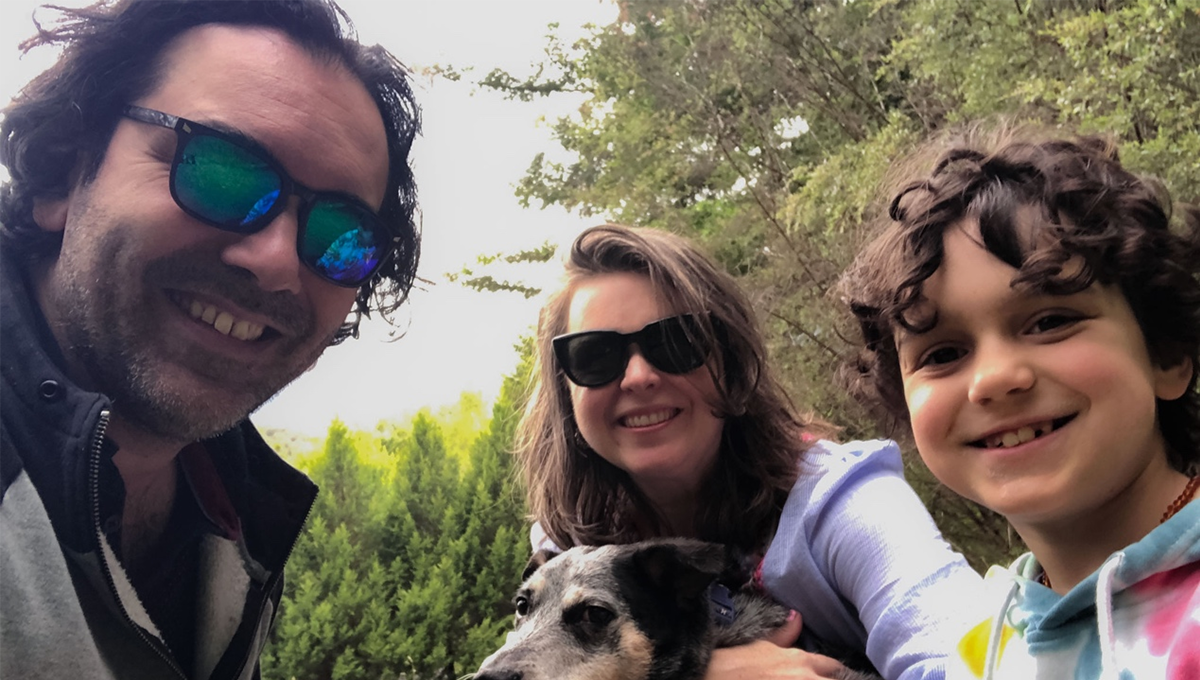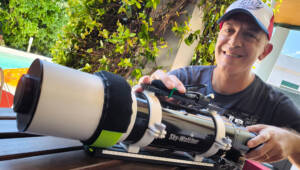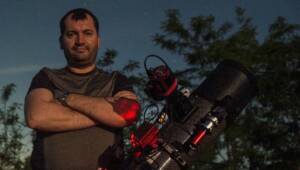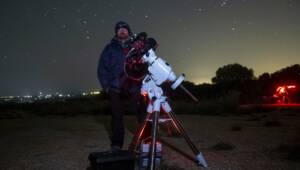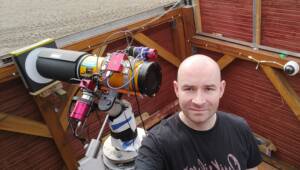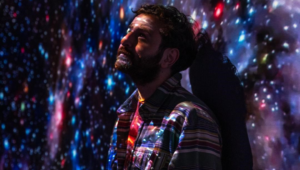Hello Steeve, thanks for accepting our interview invitation. Congratulations on winning the ASIWEEK competition in week #21/2023!
Q1: At first, congratulation that your nice image won #ASIWEEK. Can you introduce yourself to us?
Hello, my name is Steeve Body, and I am an enthusiastic amateur astrophotographer from Melbourne, Australia. My background is in music and sound engineering, and I currently work in education as the coordinator of audio production at a university in Melbourne. My fascination with space and astronomy led me to astrophotography in 2020, where I found a perfect balance between my technical skills and love for the night sky.

Q2: Why do you love astronomy? What does it mean to you?
As a child, I was always fascinated by space and astronomy. I loved looking at the stars and reading about planets, nebulae, and galaxies in books. When I discovered astrophotography, it was a dream come true for me. I love the challenge of capturing a beautiful image of a distant object, and I enjoy the technical aspects of this hobby as well.

Q3: What gear do you use for astrophotography? Any pictures of them?
I rely on an Askar 107 PHQ Super APO Telescope mounted on a Sky-Watcher EQ6-R for imaging. To capture stunning images, I use a ZWO ASI1600MM Pro mono camera, accompanied by a set of 3nm SHO and LRGB filters from Antlia. For precise guiding, I utilize a ZWO ASI120MM Mini guide camera, and my current setup can be seen in this image.

Q4: How many ZWO products do you have, what’s your first ASI camera?
When it comes to my primary imaging camera, I use the ZWO ASI1600MM Pro, while for guiding, I rely on the ASI120MM Mini. Additionally, I use the ZWO EAF for focusing and the ZWO 8x 1.25 filter wheel for seamless filter switching. I’m planning on upgrading to a ASI2600MM Pro or even better a ASI6200MM Pro if I can afford it!

Q5: How is the air quality in your region? Where do you normally take astrophotos?
My primary shooting location is my home. However, taking astrophotos from Melbourne can be challenging due to the temperamental weather. Although we don’t get many clear nights per year, the seeing is not too bad from where I live, just 30 minutes from the CBD. Light pollution is also an issue at my location (bortle 6/7), which is why I mainly shoot narrowband and only use RGB filters for the stars. I like to visit dark sites to capture reflection nebulae in particular, and fortunately, it only takes a couple of hours of driving to get to bortle 1 and 2 zones from any major capital cities in Australia.


Q6: Your ASIWEEK image “IC 2944” was outstanding! How did you capture it?
Thank you! It took me several nights to gather all the data, mostly due to poor weather. But in the end, I managed to get around 20 hours of exposures across Ha, Oiii, Sii, R, G, and B filters! Since it is a bright target, this amount of exposure gave me a good amount of clean signal to process.

Q7: How long do you normally spend on processing after date acquisition? What do you think is the most difficult part of processing for you?
I spend a lot of time processing my astrophotos. Over the past two years, I have learned a lot about processing that has really changed the game for me. First, there is the stacking and pre-processing, which I do exclusively in Pixinsight for the most part. This is a very technical part of the process that must be done with the utmost precision to get the most out of the data. Depending on the amount of data, this can take a few hours. Then there is the processing and combination of all the different filters together to make up the image, which I do mostly in Photoshop. I find that working with layers at this stage of the process allows me to balance the colors and details in the image more intuitively.




Q8: How do you balance your work and hobby?
Before astrophotography came into my life, I had no other outlet besides music and sound design, which have been my main passion and my whole professional life for a long time. I never switched off from it. In a strange way, astrophotography allows me to keep things in balance and keep me sane, sort of! My family is what keeps me mostly grounded.

Q9: Does your family like to join you when you are taking astrophotos?
Absolutely! My family and I love to plan trips to locations with minimal light pollution so that we can appreciate the outdoors together. We always bring our furry friend along too!


Q10: Is there anything you want to tell beginners?
If you’re new to astrophotography, I would suggest starting with a small, wide-field refractor (under 500mm) and gradually improving your skills in both capturing and processing before investing in more equipment.
Personally, I recommend going straight for a cooled astronomy camera and using an ASIAIR to automate your setup. It makes the whole process much more efficient and enjoyable. Remember not to skimp on the mount; investing in a good one will save you a lot of frustration in the long run. As you become more experienced, you can start increasing the focal length and resolution and exploring other types of telescopes that may be less beginner-friendly.
Planning your shots and composition is also crucial; many of the same rules that apply to photography apply here as well, such as the rule of thirds and golden ratio. Aim for quality over quantity by collecting a significant amount of data (I personally aim for at least 20 hours of integration time per target).
Join your local astronomy clubs and connecting with other astrophotographers is also an excellent way to improve your skills and seek feedback from more experienced individuals. Additionally, I highly recommend joining Astrobin, a social media platform dedicated to astrophography. For French speakers I highly recommend the youtube channel Millennium Photon with Jean-Baptiste Auroux, he is very knowledgeable when it comes to processing Astro images and explains things very clearly. Finally you should also be checking out Nico Carver’s YouTube channel for a wealth of knowledge and down-to-earth tips, as well as the Astro Imaging Channel for processing advice from expert astrophotographers. Dylan O’Donnell’s channel is another personal favorite of mine for his humor and light-hearted approach.

Q11: How do you think the future development of astrophotography? Do you think we will have more friends join us?
It’s never been easier or more affordable to pursue astrophotography than it is now, and I believe this trend will continue. As a result, we’re seeing a younger generation getting interested in the hobby, and it’s exciting to see how much better amateur astrophotography has become in just the past five years. I’m already seeing a lot of 16–20-year-olds taking up the hobby, and I think the future of astrophotography is bright!

Q12: What’s your impression of ZWO? Is there anywhere you think we can do better?
ZWO has established itself as one of the most iconic brands in the industry, and I believe it’s a significant reason why astrophotography has become more accessible and affordable to a wider community. Keep up the fantastic work of producing amazing instruments for us to use!


